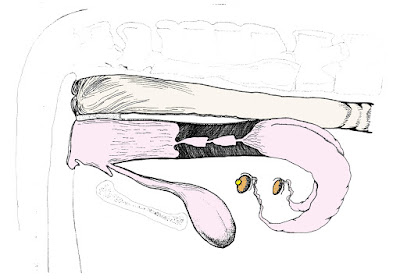I was recently reading an article which reported the cost for days open in a dairy animal to be between $3 and $5. Many factors come into play with determining if an animal becomes pregnant or not, and several of them are beyond our control as dairy producers. However, one of the variables we can control is our A.I. technique. I asked Eric Maynard, GENEX Dairy Education Instructor, to give me the top ten A.I. technique and semen handling mistakes people make.
1) Incorrect or Poor Semen Placement. Several years ago, researchers at the Pennsylvania State University developed radiography techniques to clearly evaluate insemination accuracy. These techniques overcome some of the limitations of the earlier dye techniques used to evaluate placement. The study was reported in which 20 professional technicians and 20 owner inseminators were evaluated using the radiography technique. Each person inseminated a total of 20 reproductive tracts. Radiographs were taken to access inseminating gun placement. The data showed that only 39 percent of the gun tip placements were in the uterine body. A total of 25 percent of the gun tip placements were in the cervix. Twenty-three percent were in the right uterine horn, and 13 percent were in the left uterine horn. Sixty percent of the semen was distributed either in the cervix or disproportionately in one uterine horn. Only 40 percent of the semen was located in the uterine body or equally distributed in both uterine horns.
2) Lack of reproductive knowledge. Failure to understand the anatomical and functional relationships among the various tissues and organs of the reproductive system may lead to consistent insemination errors.
3) Animals are not in heat. Ensure that the cow to be bred is truly in heat. Research studies indicate between 7 and 20 percent of the cattle inseminated are not in heat.
4) Careless handling of A.I. gun. Once the insemination device is assembled, it must be protected from contamination and
cold shock temperatures.
cold shock temperatures.
5) Improper straw handling. Shake the straw after removing it from the tank to eliminate any drops of nitrogen at the end of the cotton plug. This will prevent the plug bursting off when it is put in the water bath. If you have a large group of animals to inseminate, use semen more promptly by having one person thawing and loading while another breeds the animals.
6) Contamination. The vulva region must be thoroughly wiped clean with a paper towel. This is important in helping prevent the interior of the reproductive tract from becoming contaminated and possibly infected. A folded paper towel can be inserted into the lower portion of the vulva. The insemination rod can then be placed between the folds of the towel and inserted into the vagina without contacting the lips of the vulva.
7) Poor A.I. gun angle. To avoid the possibility of entering the urethral opening on the floor of the vagina, the insemination rod should be inserted into the vulva upward at a 30 ̊ to 40 ̊
angle.
angle.
8) Incorrect hand placement. During the process of semen deposition, take care that the fingers of the palpating hand are not inadvertently blocking a uterine horn or misdirecting the flow of semen in some manner.
9) Incomplete semen deposition. Be careful not to pull the insemination rod back through the cervix while the semen is
being expelled.
being expelled.
10) Animal movement during insemination. If the cow has moved during semen deposition or you think the rod has moved, stop the semen deposition and correctly
reposition the rod tip before continuing semen deposition.
reposition the rod tip before continuing semen deposition.
Source: Genex
(T1, D1)














